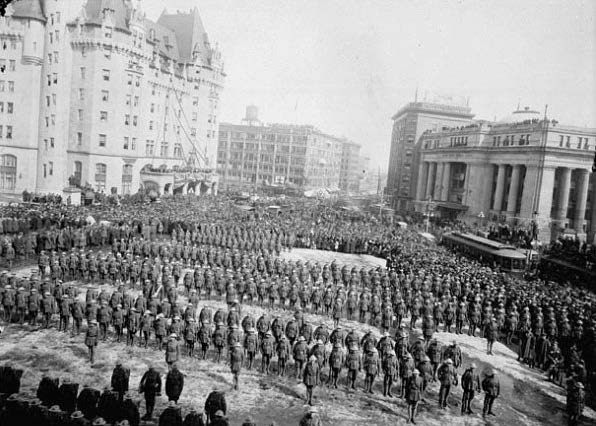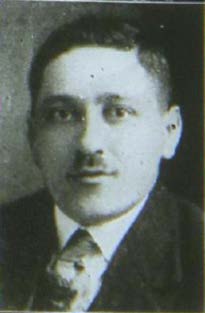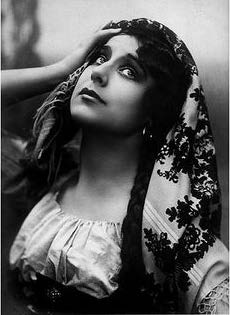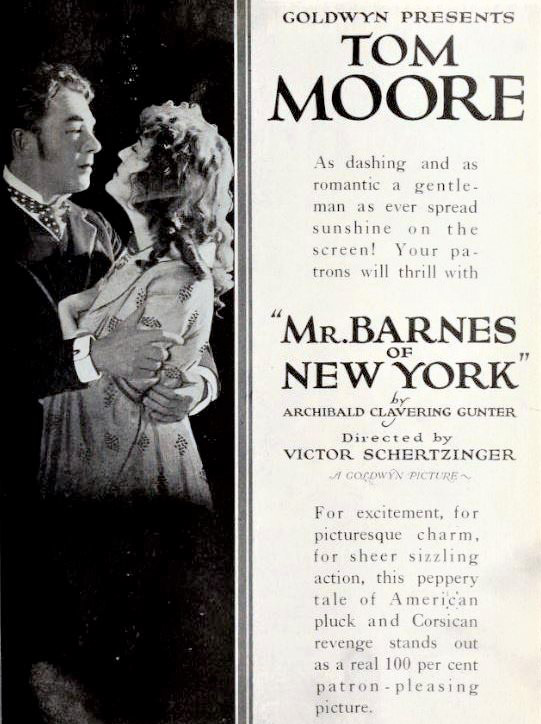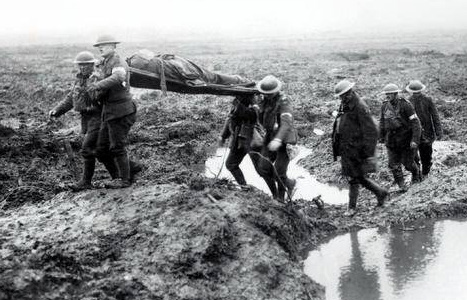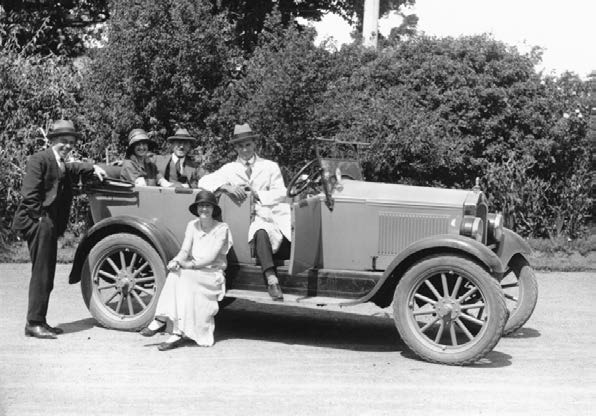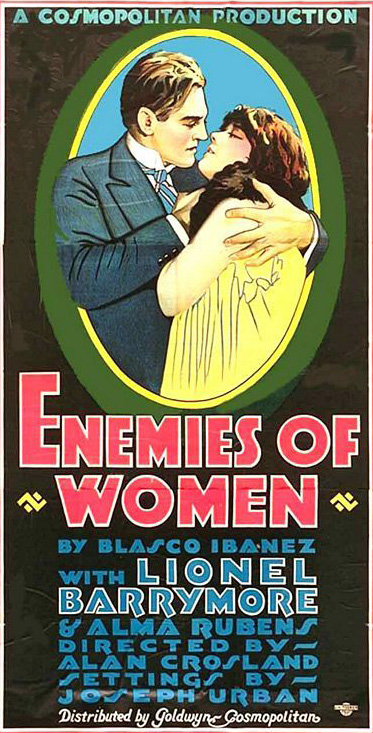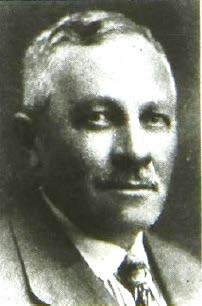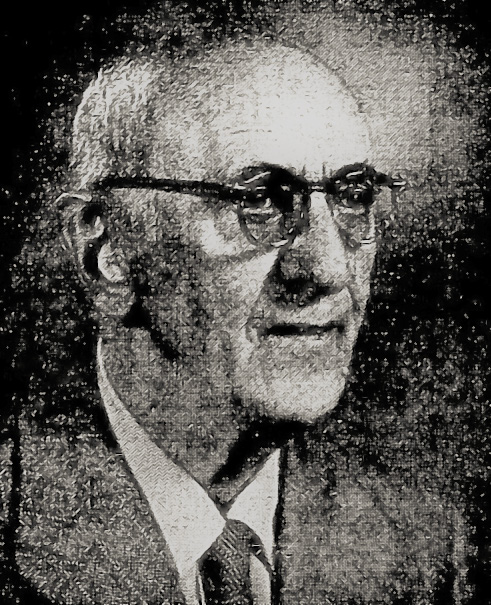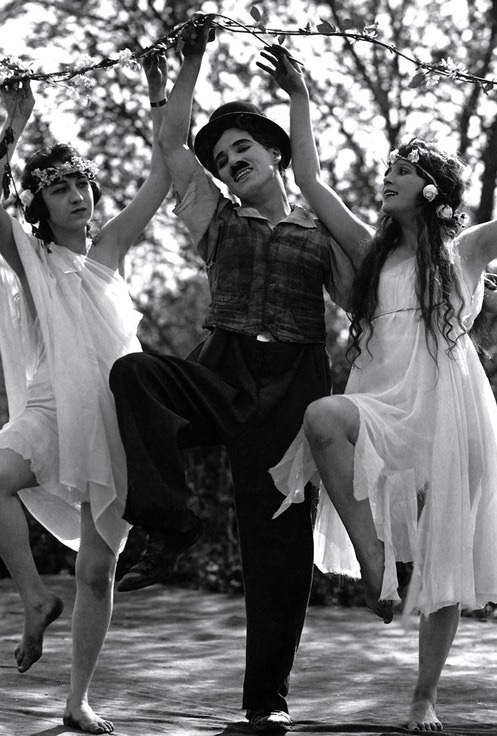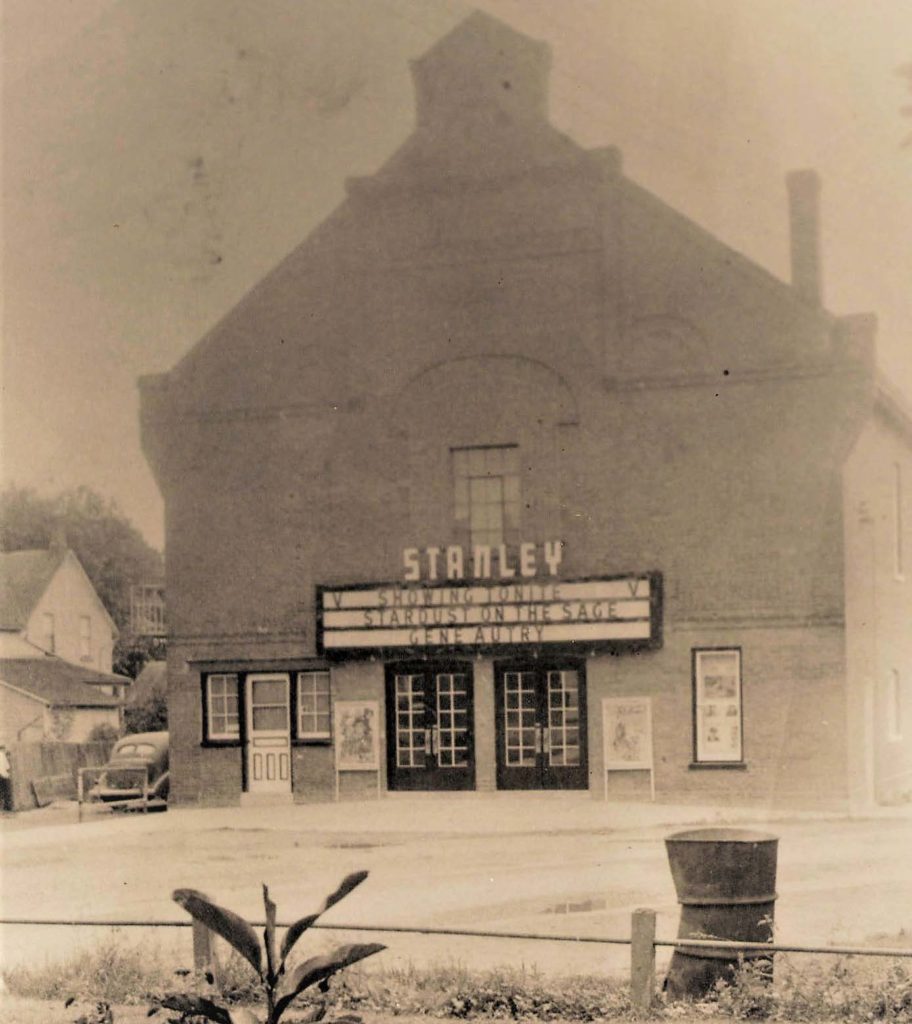HISTORY OF 19 ON THE PARK AND THE CIVIC SQUARE
Stouffville Hall Company
Being born in 1910, my first memory of our theatre was attending the moving pictures at a young age; perhaps it was around 1916. The moving pictures were a slight betterment to that of a slide show. At this point, the theatre went by the title of The Auditorium. The building dates to 1900, built by Nathan Forsyth. Forsyth too, had built the fire hall and wooden hose tower in front of the current theatre more than 10 years earlier.
Originally, the three properties (including the fire hall), measuring a little less than an acre together, were assembled first by the Daley’s, then sold at a reduced rate to the Sangster’s, and the same to Elizabeth Truman, all between 1989 and 1898; the real value was around $6,500 in those days. The properties were then acquired, again for a small sum, by a group – David Stouffer (Eliz. Truman’s brother), W. Sanders, S. Warriner, W.J. Stark, J.G. Martin, and R. Duncan. The Daley’s and Stark’s had an insurance and real estate business together, while Stouffer, Daley and Warriner shared officer responsibilities for the Provincial Building & Loan Association. Other relationships existed as well, as Stouffville was a small community of 1,200 persons back then.
Ultimately, the ownership of the property – and the new auditorium building – belonged to the “Stouffville Hall Company”. The actual auditorium was in the upstairs of the brick building. The ground floor housed J.A. Brillinger’s paint shop, specializing in wagons and automobiles. I was told that there used to be a market on the ground level. As World War I had kicked off – I remember seeing a Patriotic Concert to support our troops that had recently fought in Ypres, Belgium. At Christmas, for a 10 cents admission, we went as a family to see the Stouffville Methodist Sunday School’s annual Christmas program. The hall was brilliantly decorated for the affair.
Around the same time that one of our Canadian hospital ships – the Llandovery Castle – was mercilessly torpedoed (and life boats machine gunned), killing 234 of our countrymen, we were seeing comedic stage productions at the Auditorium in favour of our boys. The Janey Canucks never miss a step at distracting a large audience from turbulent times, and they didn’t fail with the production of Miss Fearless & Co. We would buy tickets in advance at Silvester Bros.
By 1919 we were seeing silent moving reels that brought some of the best-known actors in the world to Stouffville, like Charlie Chaplin. The silent shows were accompanied by the Famous Jazz Orchestra.
Green & LaBarr
Advances were changing things in town: just the other day, after 45 years in business, W.H. Todd of Stouffville Carriage Works shuttered his plant and auctioned his equipment. Even though his reputation extended across many counties, people now look to the motor car for getting around. The Auditorium Garage, as it is commonly known, was operated by Mr. Widdifield – his focus is on Ford and Chevrolet repairs. In 1922, Green & LaBarr took over from Widdifield – they fixed all makes of cars. Now there are five public garages in Stouffville.
While Mr. Green was busy cleaning up and shutting down for the evening downstairs, upstairs we were preparing for classic silent show hits, such as The World and Its Women, starring Geraldine Farrar. Our theatre and Uxbridge’s The Strand Theatre are now under the same management. However, prices had only climbed to 15 cents for children, including War Tax.
Alexander Scott carved out some office space alongside Green & LaBarr as the local agent for Gray-Dort Motors. Gray-Dort motor cars are assembled in Chatham, Ontario by a partnership between Canadian and American interests. These cars start more reliably in winter; the coupe is extra neat.
As for movies, by 1923 things were getting a bit stale – we were typically seeing two-year-old movies, like The Man from Lost
River, starring the handsome hero House Peters. Prices though, dropped to 10 cents, and I guess it is better than the alternative – a trip with my parents to the Stiver Bros. to buy egg mash feed for the chickens or talking to Mr. A.C. Burkholder at Standard Bank about cattle prices. That spring, just before Easter, rumors were flying. A gentleman was in town from Toronto with a view to start a motion picture theatre here, but he found that electric current was not available for the purpose.
Later in the fall the Town completed work on the new hydroelectric system, which provided needed power to the Stouffville Creamery and Burholder’s chopping mill – and provided an opportunity to Mr. Sidney Schmidt. Schmidt leased the Auditorium Theatre from the Borinsky family to become an official movie house for showing silent films. Stouffville was one of the first small towns around to have a dedicated theatre.
Isaac Borinsky
The Stouffville Creamery, nearby The Auditorium, was the Borinsky family’s main business interest. Stouffville Creamery opened before my time – I’m told it was 1892. A virtual who’s-who of the Stouffville business world had been involved in the venture – Jamieson, Baker, Wagg, Stouffer, Brown, Burkholder, etc. However, the dairy business is an up and down affair; the creamery eventually closed by the time I was 8 years old.
Isaac Borinsky, a native of Russia, bought the land holdings and re-opened the plant on the day that the Armistice was signed in 1918; the great war had ended. Isaac’s son Joseph moved to Stouffville from Toronto to join his father in the creamery business; he bought a house on Church Street South, later moving to O’Brien. Shortly after reopening, they increased production of butter from 1,000 pounds a day to 3,000 pounds. In 1921, the Bornisky’s acquired the parcels of improved land that contained the theatre and fire hall for a total of $9,000.
Sidney Schmidt
Sidney Schmidt quickly established a close relationship with the people of Stouffville. Every fund raiser seemed to gravitate to the Auditorium, and Schmidt enabled the activity. The original “screen” was a white painted wall 9’x12’ in size. These early silent movie machines utilized a special electric light bulb and were turned by hand, necessitating frequent pauses for manual re-winding. Motion pictures were shown Tuesdays and Saturdays. Doors opened at 7:30 for an 8pm commencement. Cost 10 and 20 cents. Shows like the great war movie Wings were accompanied by gentlemen that created artificial sound effects from off stage, such as the sound of airplane engines and machine gun fire.
The day before Halloween in 1923, I recall seeing the latest version of Mr. Barnes from New York that featured Tom Moore and Anna Lehr. It was a melodramatic love story concerned with a murder, set in the beautiful Corsican landscape. Before the show, we made purchase of a box of chocolates and cremes from Porter’s. The first snow of the season occurred a couple weeks later. The farmers brought out their sleighs. It was perfect timing, because the Board of Trade had organized a fundraiser to build a children’s winter slide in the park. A slide in the park is preferable to playing on the sidewalks, and safer. The popular feature The Enemies of Women was shown and was accompanied by the orchestra. Tickets sold for 35 and 20 cents.
Mr. Schmidt announced that he had assumed the district agency for Peter Hamilton Company Limited, the farm implement manufacturer based in Peterborough, Ontario. The Gray-Dort Motors agency had shut down by then (the company had manufactured 26,000 motor cars by the time they shuttered). This affair did not last long, neither did the public garage operated by Green, who had parted ways with LaBarr and taken on a new mechanical partner named Kenmare a couple years back.
Joseph Borinsky stated in Spring 1925 that he had leased the ground floor of the Auditorium to Mr. S. Castle Smith of Cannington for the purpose of introducing a local Ford Agency. A new cement floor was laid, hydro lighting installed, and everything placed in up-to-date order. What is Cannington’s loss, is to be Stouffville’s gain. The garage in the Auditorium was equipped with a full line of Ford parts, tires and accessories. Cecil Shackel has moved his public garage to operate as the Ford on-sight garage. By May, Mr. Castle had installed a gas pump for the convenience of the public. Oddly and without explanation, Mr. Castle gave up the dealership by October of that year. He had 3 cars and two trucks left that were sold at a deal.
It was a crowded house in May for the second annual Shadow Lake Minstrel Girls performance. However, it didn’t measure up to last their performance last year – that one would be hard to beat. For Dominion Day [July 1], we were in for a treat. The Auditorium Theatre presented a special show at 8:15pm named Month of 36, which was about the final battle in the Texas Revolution when they gained independence from Mexico in 1836. The theatre had popular prices at 15 cents. Afterward, the family enjoyed a pie together from Stover’s Pastry – that Ambrose Stover sure can bake a delectable pie!
Murray Pipher
In November, solemn and impressive was the war veteran ceremony held in the Auditorium on a Sunday afternoon. The war veterans met to honor their dead comrades. A goodly number of people turned out to show their respects. After the ceremony, the veterans marched to the cemetery, being accompanied by the band to visit the graves of dead heroes. They also sent a wreath to Baker Hill Cemetery in memory of Murray Pipher.
Murray had enlisted in his country’s service in Ottawa in 1917. Upon reaching England he had been assigned to the Princess Patricia Canadian Light Infantry. With this battalion, he was among the first to enter the Belgium town of Mons after a great battle. It was a brutal scene where over 40,000 Canadians had been killed or wounded. Mons had been the last battle of World War 1. Murray returned to Canada in March 1919, worked for neighbours around home and diligently served his church, the Baker Hill Baptist by regularly teaching class in the Sunday School.
But, Murray’s health was severely weakened by his war experiences. He had to give up work and service, eventually being moved to the Mountain Sanitorium in Hamilton. The local veterans successfully helped Murray to make his case before the Pension Board for compensation. Everything was done to help him along, to no avail. He died at the sanitorium last spring, March 20, 1925. Now, in my 90th year, I understand that Murray probably suffered from post-traumatic stress disorder – god knows how they treated the ailment back then.
The Auditorium was now being frequently used by travelling Evangelists and political parties, for local nomination meetings, and the Town used the space to present financial statements to the public annually.
Ernie Stouffer
For the 1st of April 1926, Ernie Stouffer – son of Noah Stouffer – moved his garage from the east end of Stouffville to the Auditorium. Ernie became a well-known and appreciated local garage man. He had to take a break for a period in 1928, due to an automobile accident. He had been proceeding along 8th Concession [Highway 48], about a mile north of Ringwood near the bridge, when something went wrong with the steering gear. The car shot uncontrollably across the ditch and through two heavy fence posts. Ernie had to get ten stiches for a jagged wound across his right cheek and lost a piece of flesh from his lip, but otherwise is getting about again.
A month after the accident, however, Ernie turned the business over to his right-hand employee, Roy “Red” Strong. Even though he had worked up one of the largest garage businesses locally, he received an offer he couldn’t deny – a Toronto firm asked him to manage their business, diagnose cars as they come in, and see that they are in proper working order on the way out. Red Strong is expected to mange the Auditorium Garage sufficiently.
For New Years 1929, the Auditorium Theatre presented the Merchant of Venice by the Brock-O’Connor Players – 5 Acts, 9 Scenes. The costumes were beautiful and the special lighting effects were amazing. Proceeds went to the Stouffville War Veterans Association. Reserved seats were available at special (high) price – $1.
Meanwhile, Red Strong was doing well. He was out of space. He bought the old B.E. Beebe blacksmith shop on Main Street and is now wrecking the building to make way for the construction of a large garage. The building will be 42’x60’, with a canopy top over the oil station and a gas tank in an island position so that cars can be served at either side of the tank. The late Byron Beebe had owned this property for 45 years.
Joseph Borinsky
Joseph Borinsky was elected to Stouffville Council in 1925. He often jocularly referred to himself as Stouffville’s first Jewish Councilman. No contentious issues approached in the early part of his term, though it became clear that Stouffville’s public realm was tired and needed investment. Many streets were made of “mud”, the town water supply needed improvement and complaints about general unsightliness were rolling in. The dump at the south end of Market Street, within plain view, was becoming a contested issue.
Councillor Borinsky led the way to hire chartered accountants for the annual auditing of the Town books, he led the push to dig artesian wells for the Town water supply – to replace the current fertilizer-fed muddy reservoirs and demanded that a public works reserve fund be maintained. Borinsky was comfortably re-elected in 1927 with a first-place finish.
When his advocacy started to cost money, as public works projects were not cheap, his popularity waned; the election of 1929 returned him to council, but this time in third place.
It must be said – the new Main Street is amazing! In the old days an “improved road” meant that they had laid planks (logs) across the road, and then covered the logs with dirt to smooth it out. With Main Street being a bog to begin with, and the dirt needing to be watered often to keep down the dust, there was always mud present. A lot of dirty shoes made their way into the Auditorium. However, this new $100,000 road is constructed quite differently. First, a mile of storm sewers was laid with 45 catch basins. Then a road base is made of 6.5” of concrete, requiring 20 days of work. The final 12 days involved chipping it with different sized sand and gravel, with a cap of sealed asphalt. Being a County Road, the York Road Commission covered 45% of the cost, but there was still a lot for the local ratepayers to absorb.
Councillor Borinsky ran for Reeve [Mayor] in 1931, but was narrowly beat by W.E. Morden, 266 to 212. Some say that the matter came down to those who voted in favor of the expensive new road built last summer (himself), and those who opposed the cost (Morden).
Despite being distracted all those years by Council, the business of the Creamery was progressing well. Harold Borinsky sold his shop, the Goodwood Economical Store, and moved to Markdale where the family had acquired the creamery there. Jake Borinsky recently returned from California to open a retail creamery store in the west end of Toronto. He plans to sell both Stouffville and Markdale creamery butter. Sadly, on July 26, 1923, Mrs. Isaac Borinsky died suddenly at the young age of 52. She was an active community member and will be sorely missed by friends in Lemonville, Stouffville and Goodwood. Isaac married a Toronto woman in the fall of ’24.
With the first floor of the Auditorium being vacated by Strong, Joseph Borinsky went to work on a new business model in the summer of 1929. He renovated the whole main floor for the introduction of Stouffville’s Recreation Centre. The Centre opened in August. The main floor had been divided into two rooms, with five billiard and pool tables on one side, and two five-pin bowling alleys opposite. It has the air of a big city recreation centre, with new floors, high ceilings and the latest equipment.
In order to educate the public in the art of five-pin, given that “it is a ladies’ game, as well as a man’s sport”, the bowling was open free of charge for the first night. Harmon Hoover has been appointed the manager of the Recreation Centre. He will look after counter trade in cigars, tobacco and candy, while having an eye on both entertainment rooms.
Sydney Schmidt placed a public notice in the newspaper soon after the Centre’s opening: “I have no connection with the bowling alley and pool room on the first floor, which is owned and operated by Mr. Borinsky of the Stouffville Creamery.” It is not clear why Schmidt did that, but perhaps he was getting too many questions, or too many criticisms.
1930
It has been a long winter, but we were excited to get out into cold last Friday (February 28, 1930) to see the musical comedy show It Can’t Be Done. The show was a live performance being presented by the Stouffville Continuation School Literary Society. It was a chance to see local school children in action, including Ethel Sanders, Charles Ratcliff, Floyd Martin, and Erie Collard; plus, the school’s orchestra and chorus were present. The play’s plot focused on hilarious misconceptions of rural and city life. All seats were reserved, and I suspect, all 360 seats were taken.
This is where the story will lead off for now, for the 1930s brought many changes – a brick clock tower would be erected, and the theatre would be lowered to the main floor, giving rise to an era of “talkies” and the newly named Stanley Theatre. See column on right for current events at 19 on the Park.

